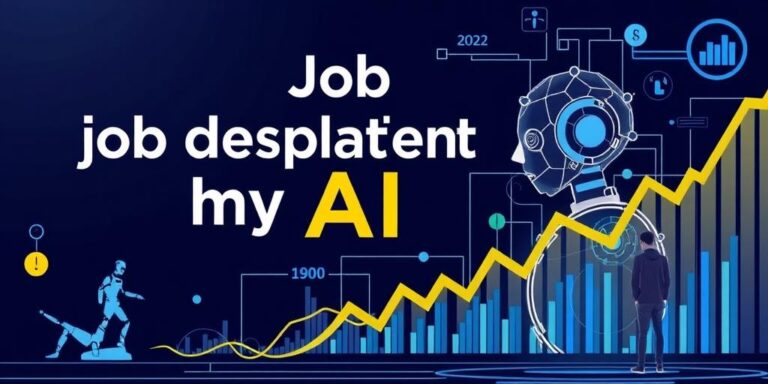Job Displacement by AI: Preparing for the Economic Shift (2025-2030)
Artificial intelligence is rapidly evolving, and its impact on the job market is becoming increasingly clear. While AI promises numerous benefits, including increased efficiency and innovation, it also poses a significant threat to job security for many. This post examines the potential for job displacement by AI between 2025 and 2030 and outlines strategies to prepare for this economic shift.
The Rise of AI and Automation
AI and automation technologies are no longer futuristic concepts; they are integral parts of today’s economy. From self-checkout kiosks to sophisticated algorithms managing supply chains, AI is already reshaping industries. As AI capabilities advance, an increasing number of tasks currently performed by humans will be automated.
Industries at Risk
Several sectors are particularly vulnerable to job displacement by AI:
- Manufacturing: Robots and AI-driven systems can perform repetitive tasks more efficiently than humans.
- Transportation: Self-driving vehicles threaten jobs for truck drivers, taxi drivers, and delivery personnel.
- Customer Service: Chatbots and AI assistants can handle many customer inquiries, reducing the need for human agents.
- Data Entry and Analysis: AI algorithms can process and analyze data faster and more accurately than humans.
- Administrative Support: AI can automate tasks such as scheduling, data management, and basic communication.
The Impact on Employment
Estimates vary, but most experts agree that AI will lead to significant job displacement over the next decade. The World Economic Forum projects that AI could displace 85 million jobs globally by 2025. While new jobs will emerge in AI-related fields, the transition may not be seamless for those whose jobs are eliminated.
Preparing for the Shift
To mitigate the negative impacts of job displacement by AI, individuals, businesses, and governments must take proactive steps:
1. Investing in Education and Training
- Upskilling: Workers need opportunities to learn new skills that complement AI technologies. This includes training in data analysis, AI development, and digital literacy.
- Reskilling: Individuals in high-risk jobs should consider retraining for roles in growing sectors, such as healthcare, renewable energy, and technology.
- Lifelong Learning: Emphasize the importance of continuous learning to adapt to the evolving demands of the job market.
2. Supporting Innovation and Entrepreneurship
- Encourage Startups: Foster an environment that supports the creation of new businesses and industries. Startups can drive innovation and create new job opportunities.
- Promote Research and Development: Invest in AI research to develop new applications and industries.
- Provide Funding and Resources: Offer financial support and resources for entrepreneurs and small businesses.
3. Adapting Social Safety Nets
- Universal Basic Income (UBI): Explore the potential of UBI to provide a basic level of income for all citizens, ensuring economic security during the transition.
- Enhanced Unemployment Benefits: Strengthen unemployment benefits to support workers who lose their jobs due to AI.
- Portable Benefits: Implement benefits that are tied to individuals rather than employers, allowing workers to move between jobs more easily.
4. Government Policies and Regulations
- AI Ethics and Governance: Develop ethical guidelines and regulations for AI to ensure fairness, transparency, and accountability.
- Investment in Infrastructure: Upgrade infrastructure to support AI technologies, including high-speed internet and data centers.
- Public-Private Partnerships: Foster collaboration between government, industry, and academia to address the challenges and opportunities of AI.
Conclusion
The rise of AI and automation presents both challenges and opportunities. By proactively preparing for job displacement, investing in education and training, supporting innovation, and adapting social safety nets, we can navigate this economic shift and ensure a prosperous future for all. Staying informed and adaptable will be key to thriving in the age of AI.




